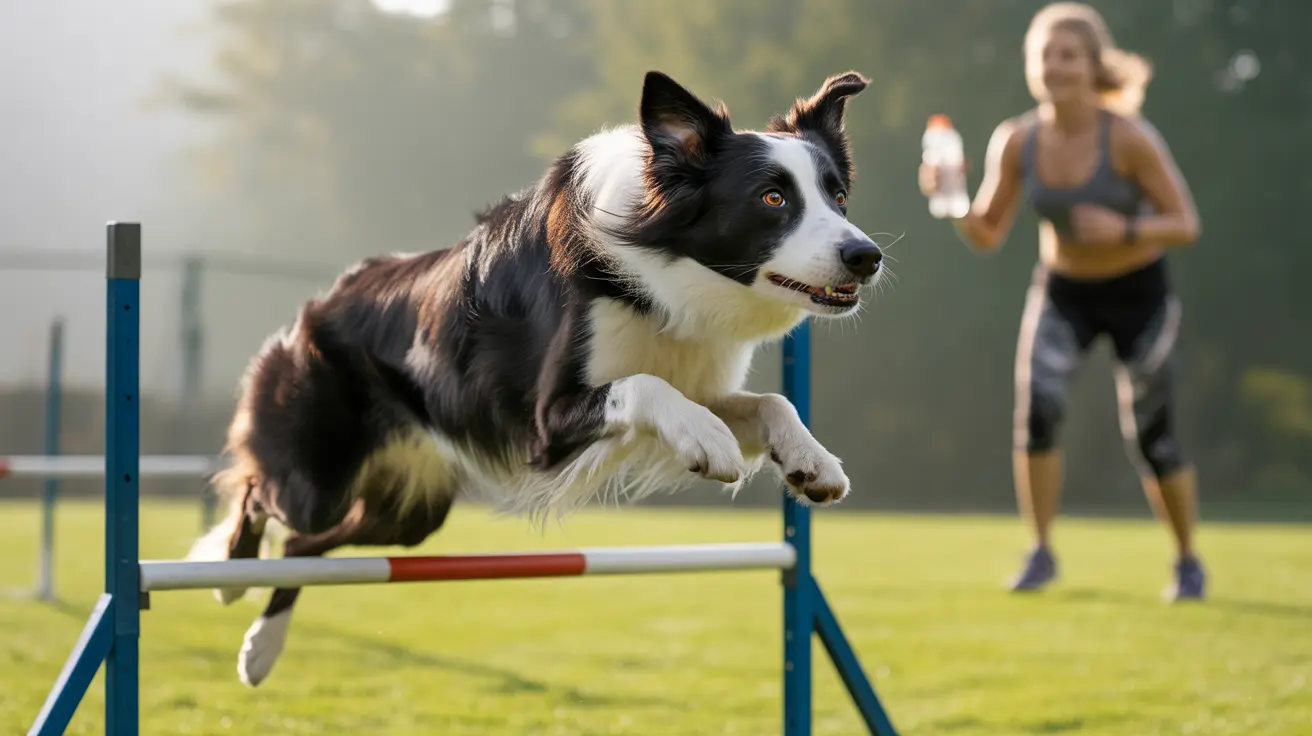If you've noticed your dog gaining extra pounds, you're not alone. Over half of American dogs are overweight or obese, but recognizing the problem is the first step toward helping your furry friend achieve a healthier weight. This comprehensive guide will walk you through everything you need to know about identifying and addressing your dog's weight issues safely and effectively.
Weight management in dogs requires a thoughtful, multi-faceted approach combining proper nutrition, exercise, and veterinary guidance. Let's explore the essential steps to help your overweight dog return to a healthy weight and maintain it long-term.
How to Tell If Your Dog Is Overweight
Before starting any weight loss program, it's crucial to confirm whether your dog is actually overweight. Here are several reliable indicators:
- Can't feel ribs easily when petting
- Missing visible waistline when viewed from above
- No clear tuck-up behind ribcage when viewed from the side
- Rounded, heavy appearance
- Difficulty moving or quick fatigue during walks
- Fat pads visible over hips and between legs
Understanding the Health Risks
Carrying excess weight puts your dog at risk for numerous serious health conditions:
- Reduced lifespan (up to 2 years shorter)
- Joint problems and arthritis
- Diabetes
- Heart disease
- Breathing difficulties
- Decreased immune function
- Higher risk of certain cancers
Creating an Effective Weight Loss Plan
Step 1: Veterinary Consultation
Start with a veterinary check-up to:
- Get an accurate weight measurement
- Rule out underlying medical conditions
- Determine ideal weight goal
- Receive personalized dietary recommendations
- Create a safe exercise plan
Step 2: Diet Modification
Implement these dietary changes under veterinary guidance:
- Measure all food portions precisely
- Switch to a high-quality, weight management formula
- Divide daily food into multiple small meals
- Replace high-calorie treats with healthy alternatives
- Add low-calorie vegetables for bulk when needed
Step 3: Exercise Program
Gradually increase activity levels with:
- Daily structured walks
- Interactive play sessions
- Swimming (if appropriate)
- Indoor activities during bad weather
- Mental stimulation through puzzle toys
Monitoring Progress and Maintaining Success
Track your dog's weight loss journey by:
- Weekly weigh-ins
- Monthly body condition assessments
- Regular veterinary check-ups
- Keeping a food and exercise log
- Adjusting the plan as needed
Frequently Asked Questions
How can I determine if my dog is overweight or obese?
Look for visible signs such as lack of waistline, difficulty feeling ribs, and reduced energy levels. Your veterinarian can provide a professional body condition score and determine if your dog is overweight.
What are the health risks associated with obesity in dogs?
Obesity in dogs can lead to shortened lifespan, joint problems, diabetes, heart disease, breathing difficulties, and increased risk of certain cancers. It also affects quality of life and activity levels.
How do I help my overweight dog lose weight safely and effectively?
Work with your veterinarian to create a structured weight loss plan that includes measured portions of appropriate food, regular exercise, and consistent monitoring. Aim for a weight loss rate of 1-2% body weight per week.
What diet changes can I make to support my dog's weight loss journey?
Measure all food portions, switch to a weight management formula, reduce treats, and incorporate healthy low-calorie alternatives like vegetables. Consider using puzzle feeders to slow eating and increase mental stimulation.
How often should I consult a veterinarian during my dog's weight loss process?
Schedule regular check-ups every 4-8 weeks during the weight loss period to monitor progress, adjust the plan as needed, and ensure your dog is losing weight at a healthy rate.
Conclusion
Helping your overweight dog achieve a healthy weight requires commitment, patience, and consistency. By following these guidelines and working closely with your veterinarian, you can help your pet reach their ideal weight safely and improve their overall quality of life. Remember that small, steady changes lead to lasting results, and maintaining a healthy weight is a lifelong journey.






